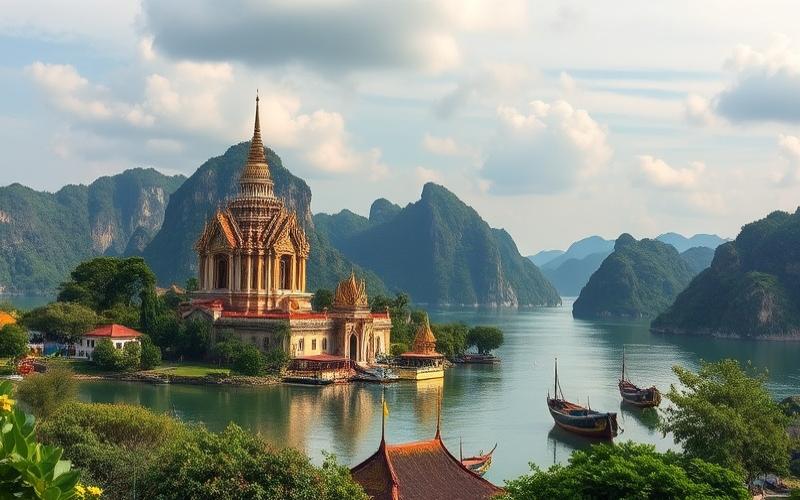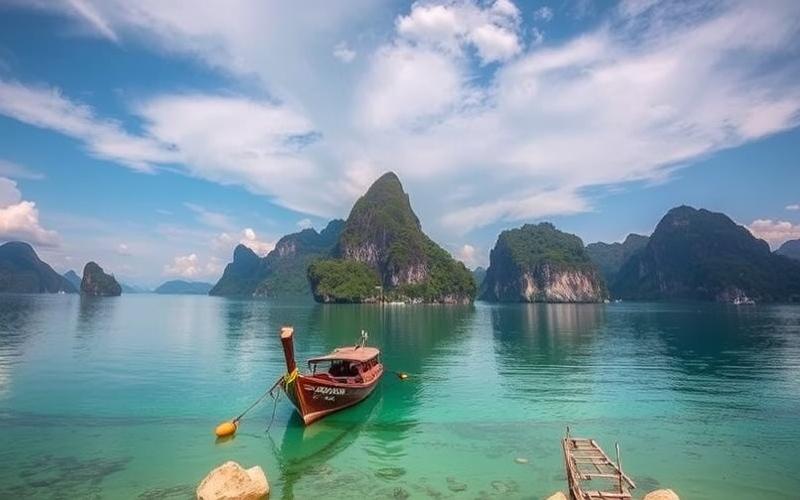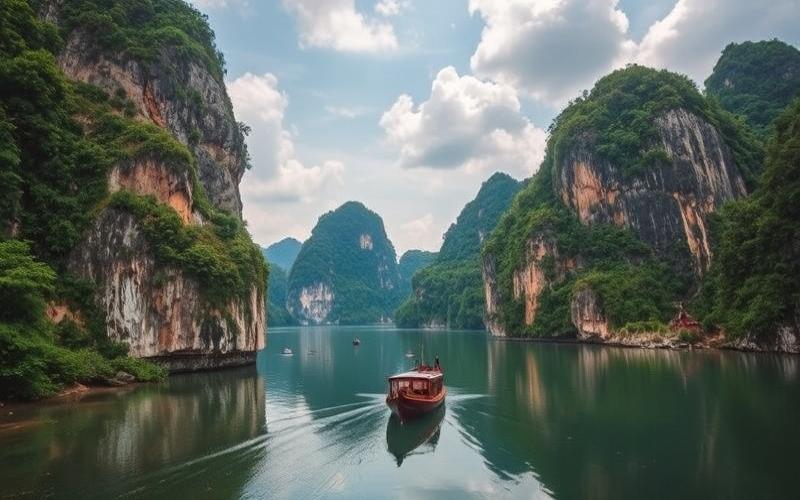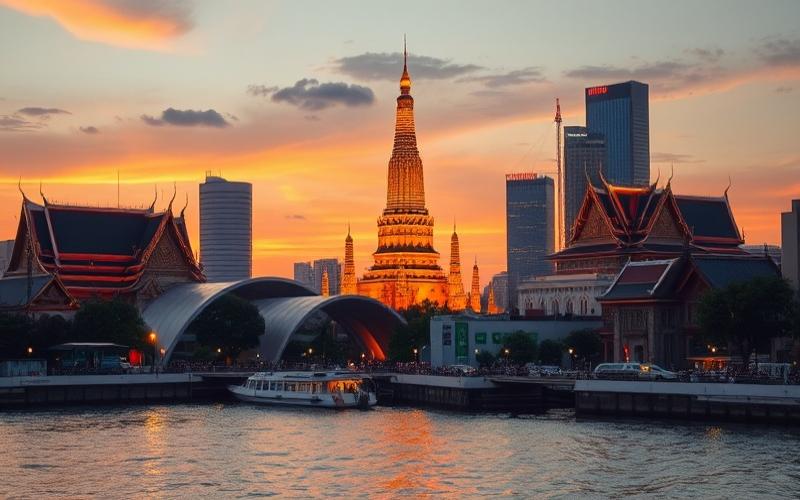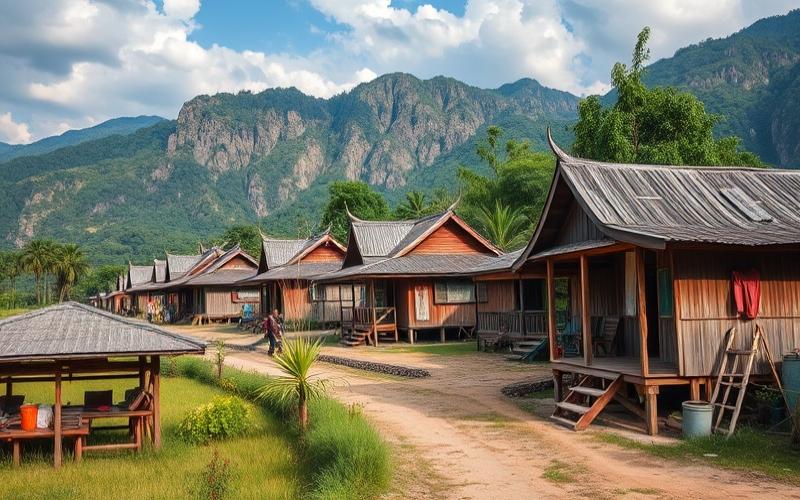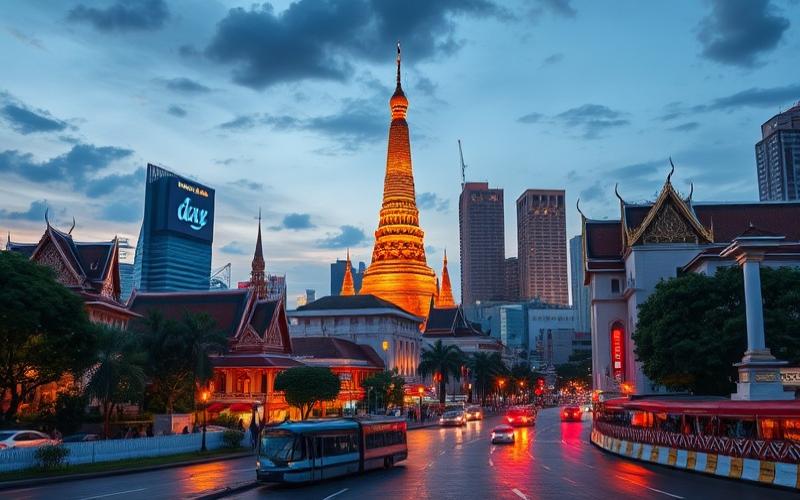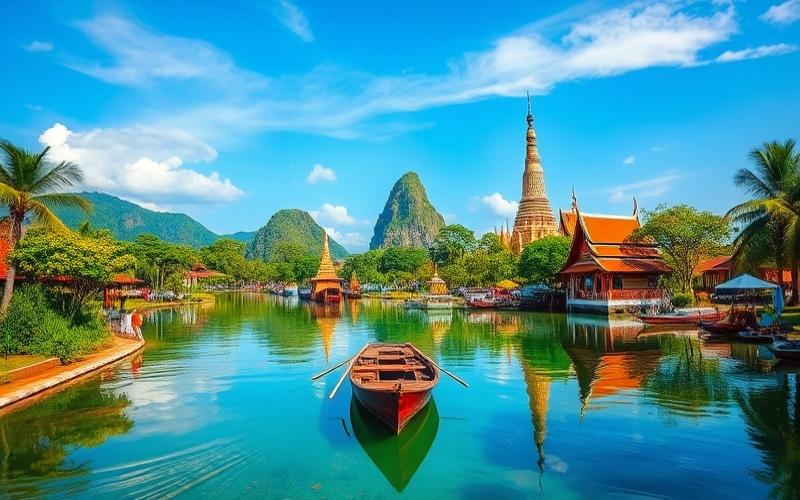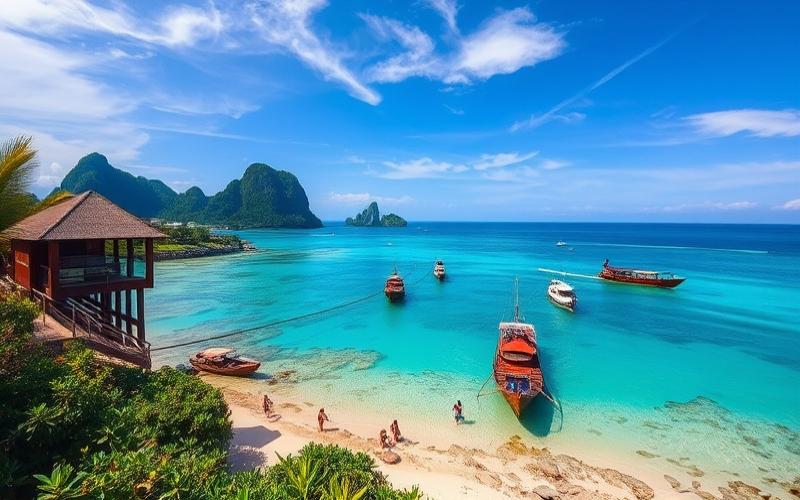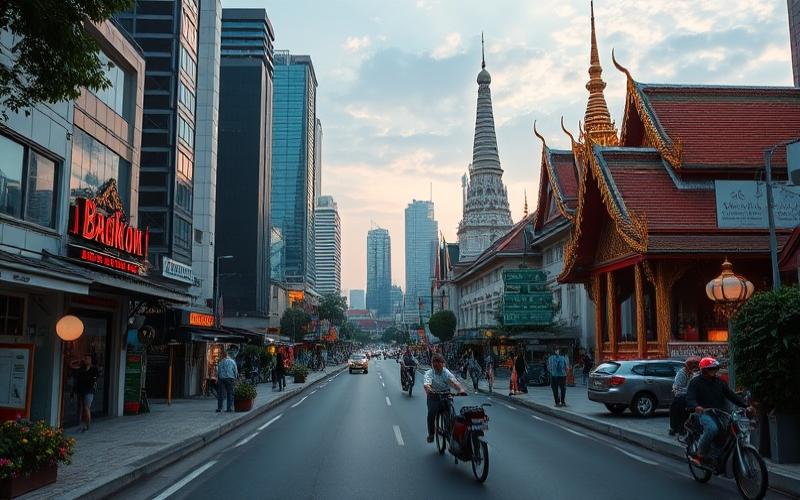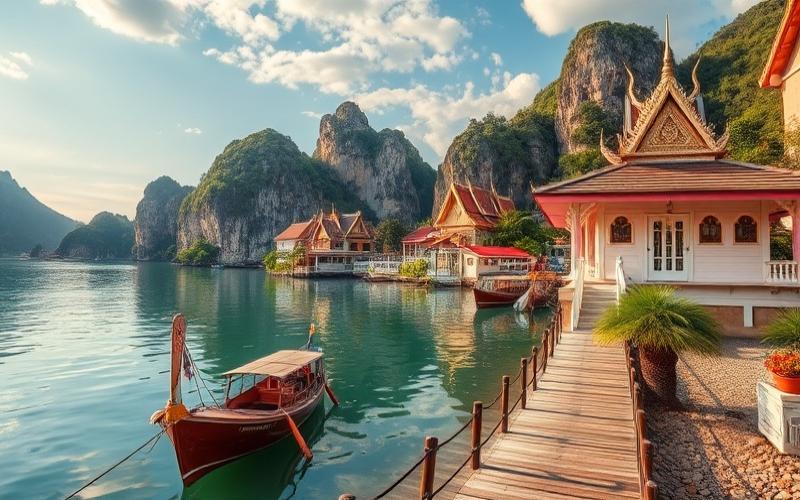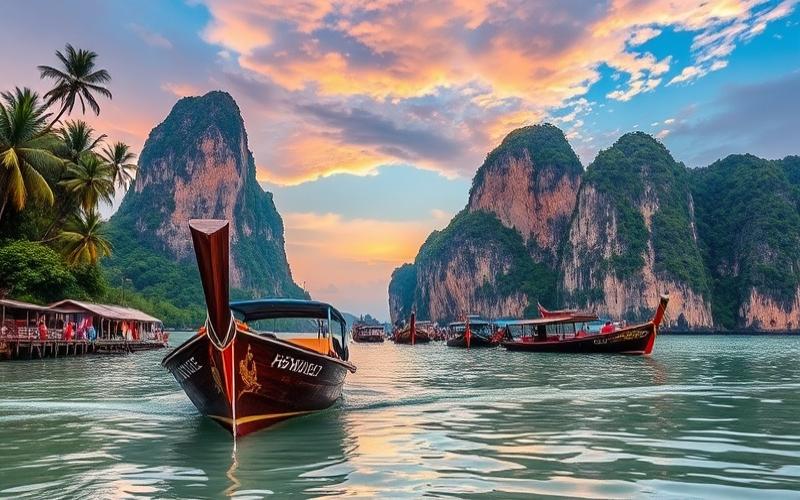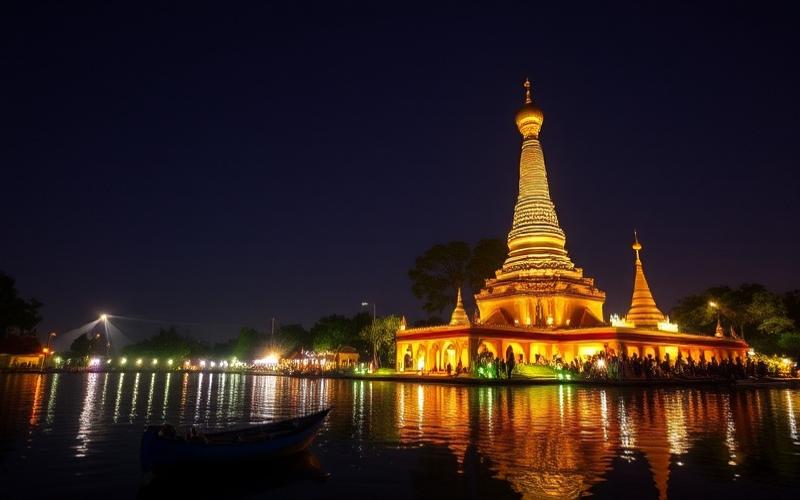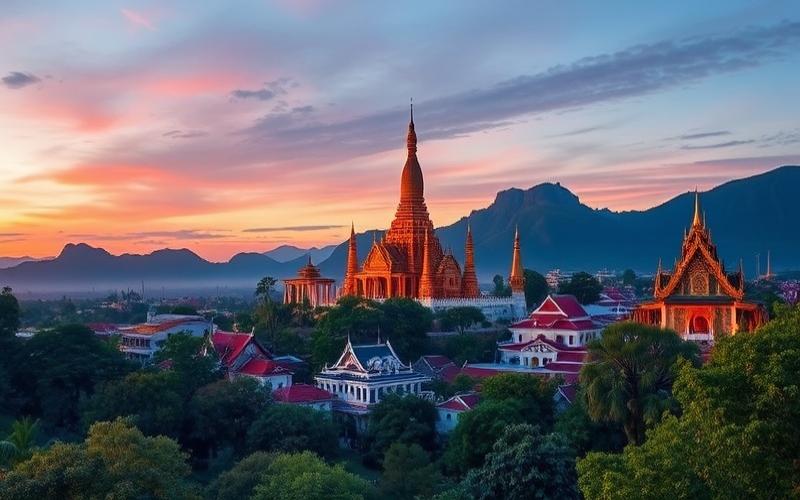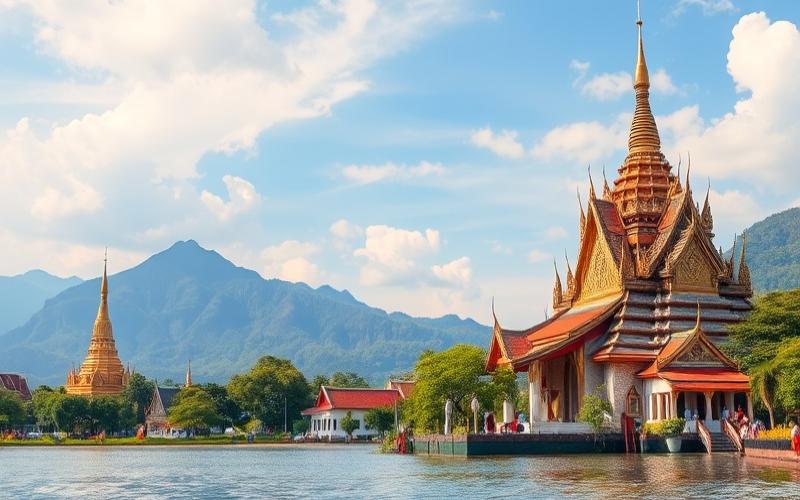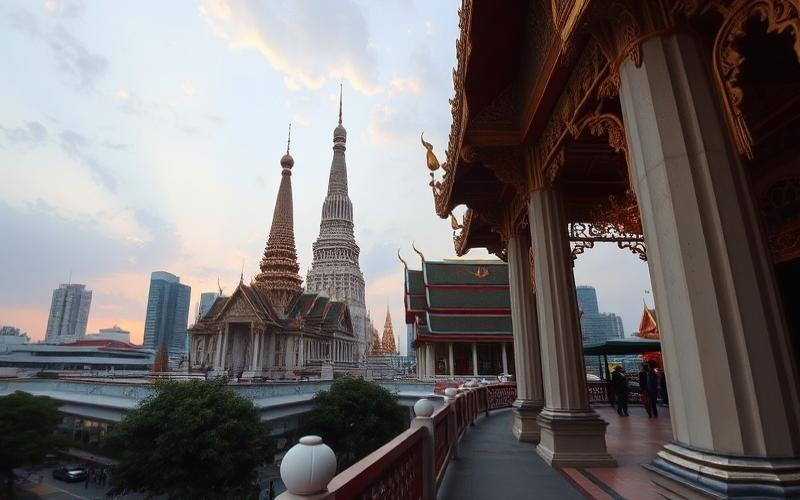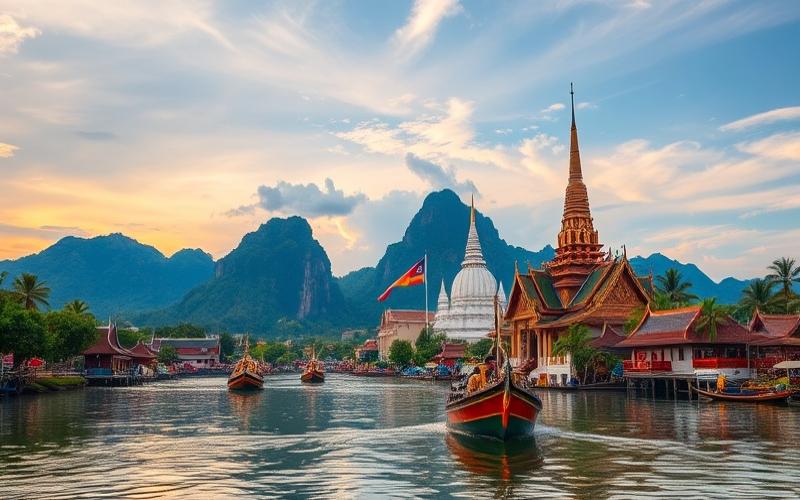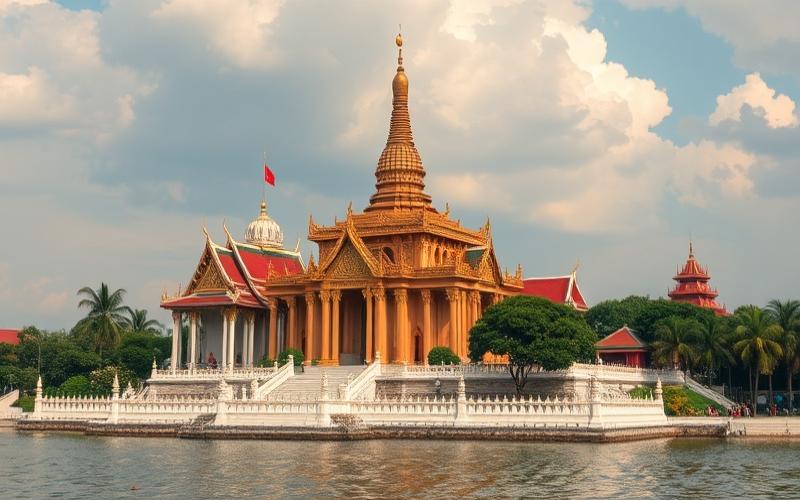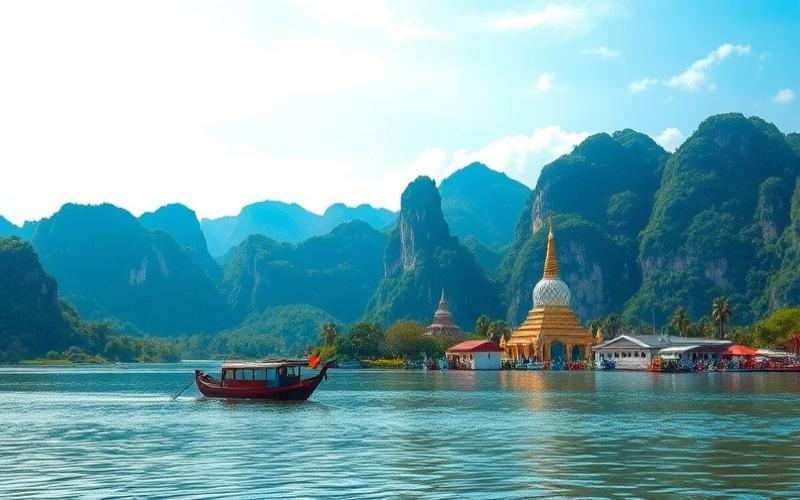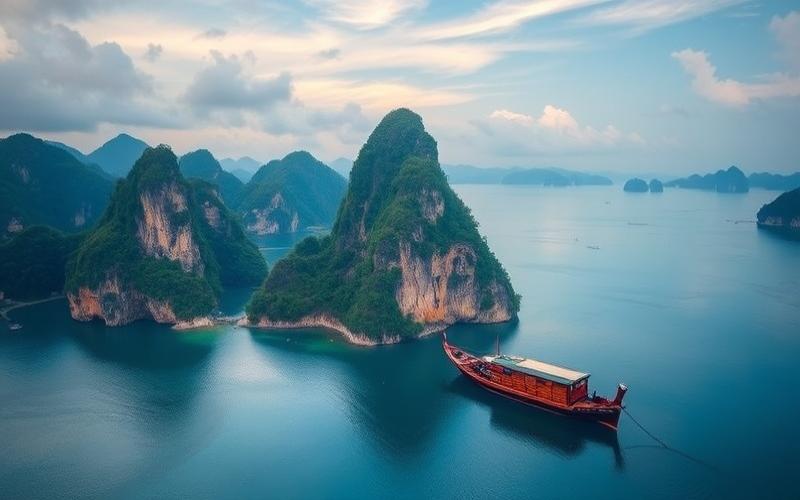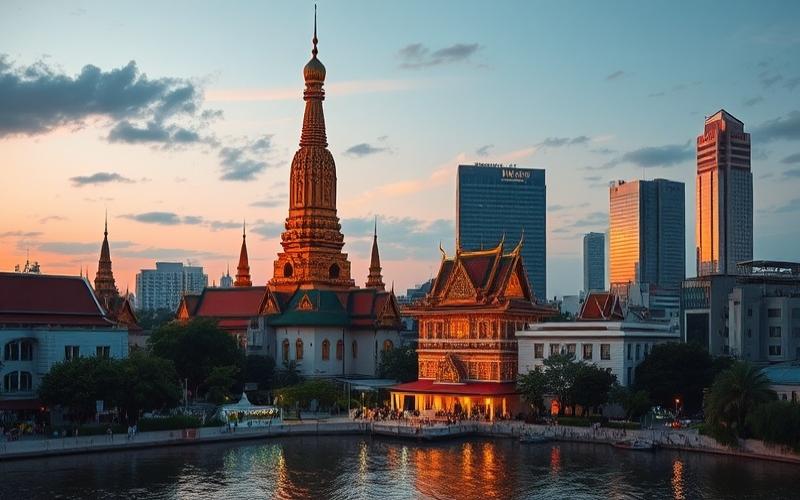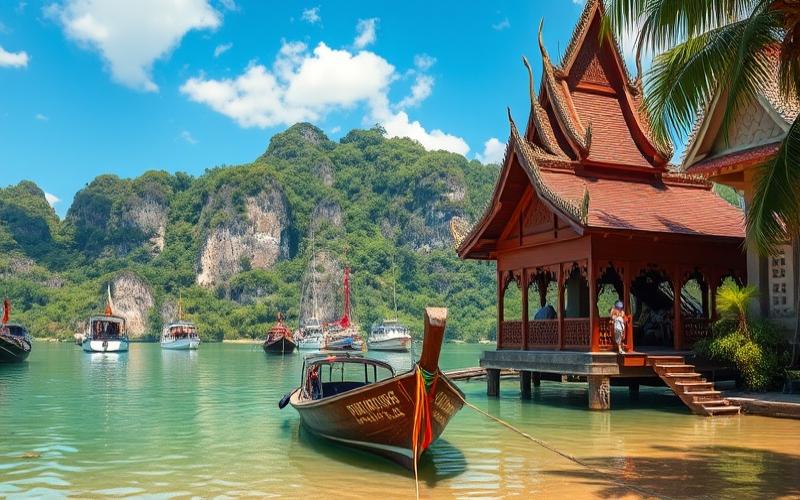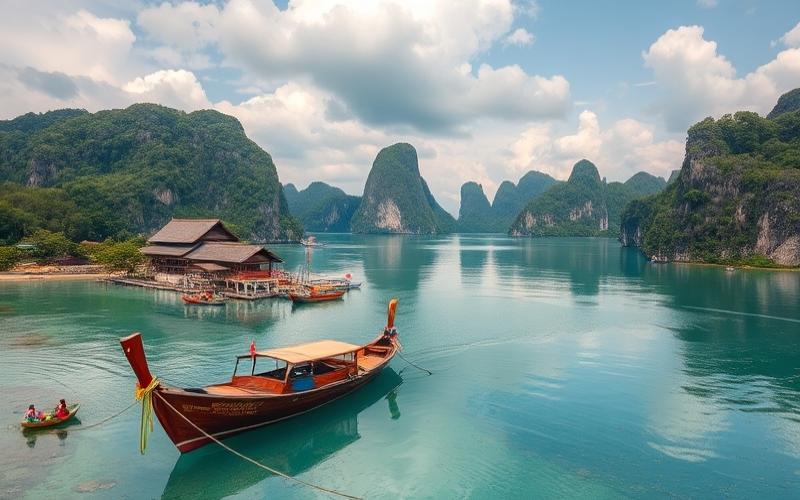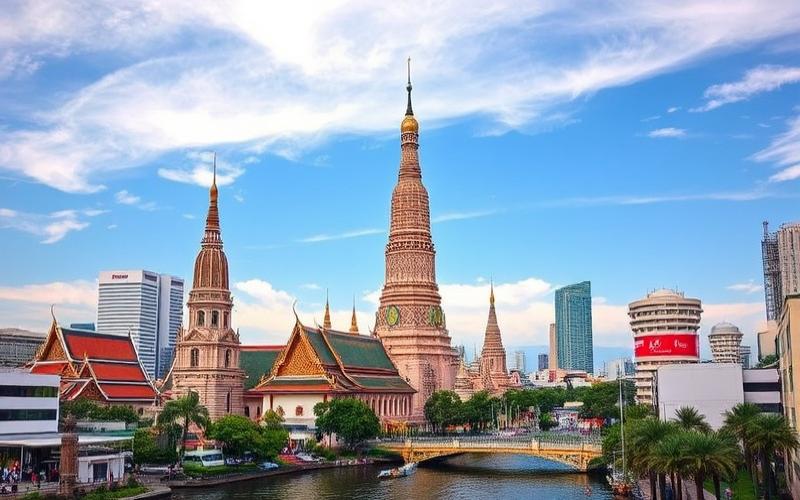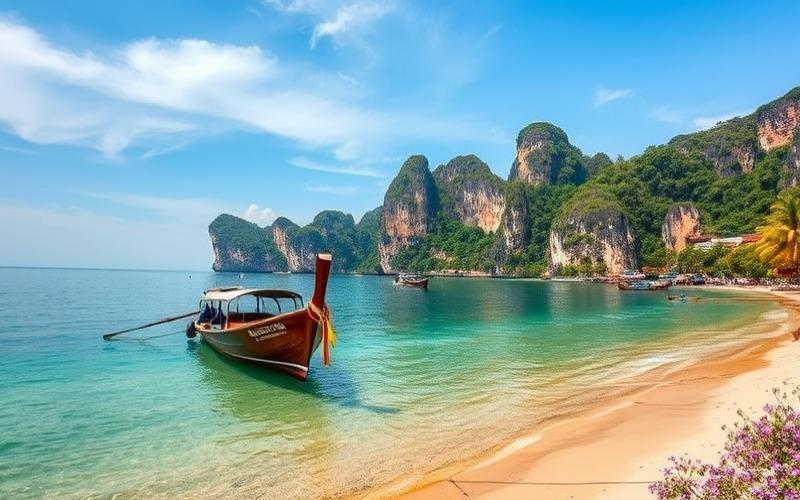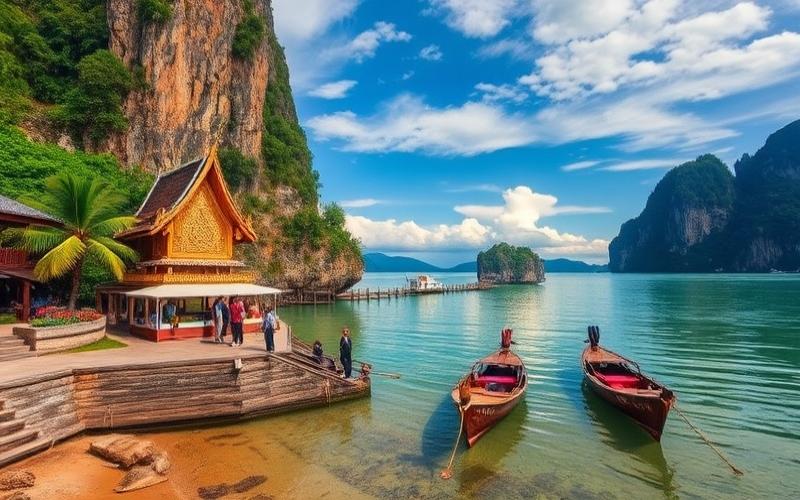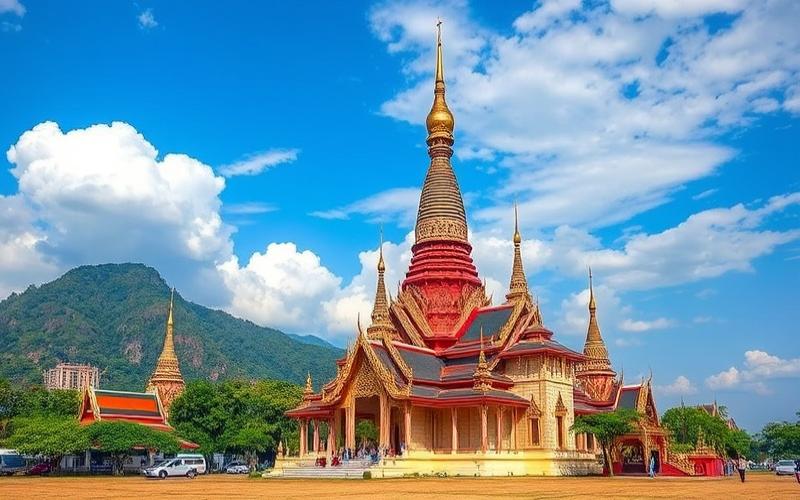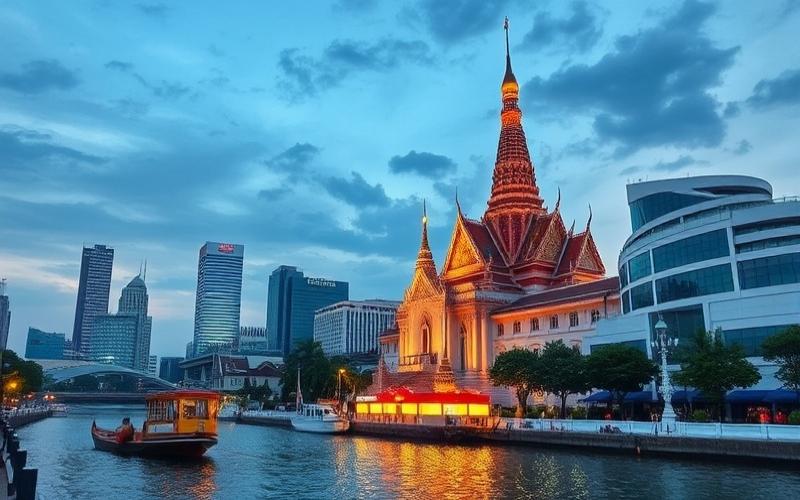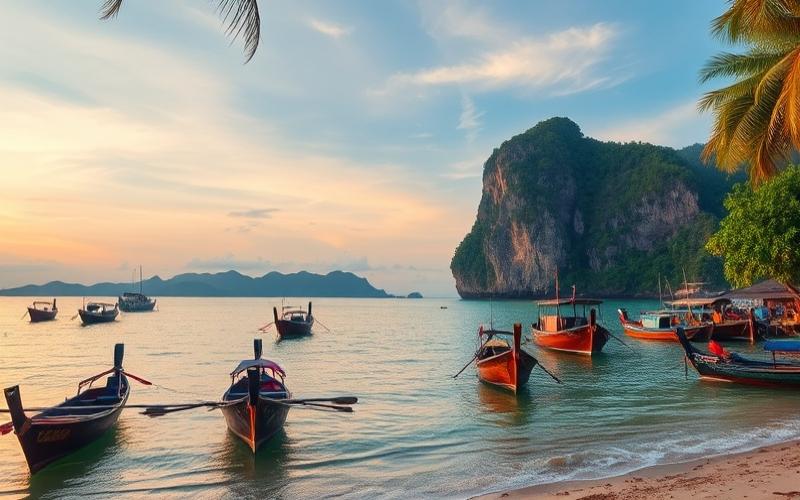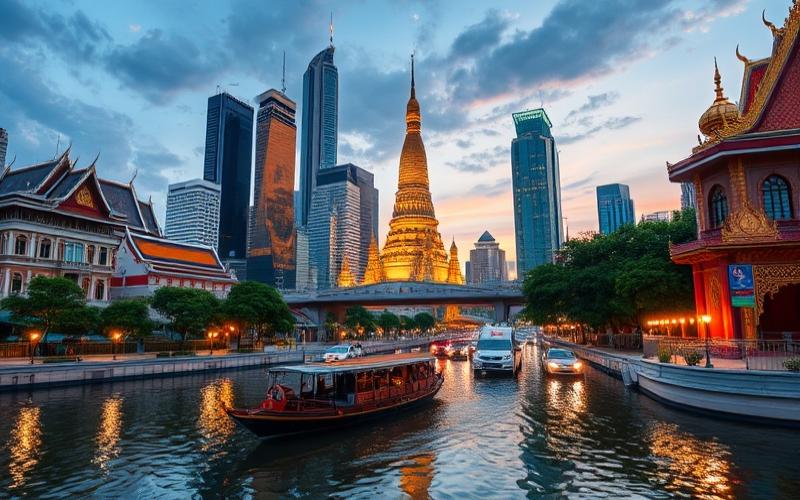
 Published on and written by Cyril Jarnias
Published on and written by Cyril Jarnias
Choosing a Location for Real Estate Investment
Choosing a location for real estate investment is a crucial decision that can significantly influence the investment’s profitability. Thailand, with its dynamic economy and enchanting landscapes, is often the first destination that comes to mind. However, neighboring countries like Malaysia, Vietnam, and Cambodia also offer interesting opportunities for savvy investors.
Investment Opportunity Comparison
This article provides a detailed comparison of the economic environment, real estate regulations, and market trends in these countries. Discover why some choose to bet on the Thai real estate market, while others find competitive advantages in investing in neighboring countries.
Comparing the Thai Real Estate Market with Neighboring Countries
| City/Country | Average Price €/m² (2025) | Annual Market Growth (%) | Rules for Foreigners | Rental Yield (%) | Stability/Infrastructure/Economy |
|---|---|---|---|---|---|
| Bangkok (Thailand) | 4,100 (approx. 150,000 THB/m²) | 3.5 | Condominium purchase possible up to 49% max of foreign quota in a building. No direct land ownership for foreigners, but possibility of renewable 30-year leasehold. | 5–8 (depending on location) | Good stability, developed infrastructure, moderate GDP growth. |
| Phuket/Chiang Mai (Thailand) | 2,500–3,000 (USD) | 3.5 | Same as Bangkok | 5–10 (villas, tourism) | Strong tourism, modern infrastructure in Phuket, international appeal. |
| Phnom Penh (Cambodia) | 1,865 (average) | 4–5 (estimate) | Purchase via company or leasehold. No direct full ownership for foreigners except in strata title. | 5–7 | Periodic political instability, rapidly developing infrastructure. |
| Ho Chi Minh City/Hanoi (Vietnam) | 2,500–4,100 (USD) | 8–10 (recent, slowdown expected) | Condominium purchase possible (up to 30% of a building), no land ownership. | 5–7.5 | Strong growth, developing infrastructure, relative political stability. |
| Kuala Lumpur (Malaysia) | 2,500–3,800 (USD) | 4–6 | Foreigners can purchase under conditions (minimum thresholds vary by state, generally >100,000 USD). Freehold ownership possible. | 4–6 | Good stability, advanced infrastructure, diversified economy. |
| Vientiane (Laos) | 1,200–2,000 (estimate) | 2–4 | Foreigners cannot purchase land, only long-term lease or via local structures. | 4–6 | Slow growth, limited infrastructure, variable stability. |
Price per Square Meter Comparison (Residential Properties, Major Cities, 2025)
- Thailand: Bangkok ~4,100 €/m², Phuket/Chiang Mai 2,500–3,000 €/m², Koh Samui 1,800–3,500 €/m².
- Cambodia: Phnom Penh ~1,865 €/m².
- Vietnam: Ho Chi Minh/Hanoi 2,500–4,100 €/m².
- Malaysia: Kuala Lumpur 2,500–3,800 €/m².
- Laos: Vientiane 1,200–2,000 €/m² (estimate).
Annual Real Estate Market Growth Rate
- Thailand: 3.5% in 2025 (stable average in recent years).
- Cambodia: 4–5% (estimate, volatility depending on political climate).
- Vietnam: 8–10% in recent years, slowdown expected.
- Malaysia: 4–6%, mature and regulated market.
- Laos: 2–4%, emerging market, slower growth.
Rules and Restrictions for Foreign Purchases
- Thailand: Condominium purchase possible with a 49% cap on foreign quota in each building. No direct land ownership (only renewable 30-year lease or local company for certain acquisition types).
- Cambodia: Direct purchase prohibited except for strata-title apartments; leasehold or via local company for land.
- Vietnam: Condominium purchase possible (up to 30% of a building). No land ownership.
- Malaysia: Freehold ownership possible above a minimum investment threshold, threshold varies by region.
- Laos: Land ownership prohibited for foreigners, only long-term leases or local structures.
Return on Investment Potential (Rental Yield, Occupancy Rate)
- Thailand: Gross yield of 5–8%, can reach 10% in the tourist villa segment in Phuket or Koh Samui (strong seasonal demand).
- Cambodia: 5–7%, growing rental market in Phnom Penh.
- Vietnam: 5–7.5%, very active market with growing demand, especially in major cities.
- Malaysia: 4–6%, mature market, low volatility.
- Laos: 4–6%, more restricted market, low liquidity.
Influence of Political Stability, Infrastructure, and Economic Growth
- Thailand: Relative political stability in recent years, solid infrastructure (transportation, airports, tourism), moderate economic growth, major tourist appeal.
- Cambodia: Recurrent political instability, infrastructure clearly improving but still uneven, sustained economic growth.
- Vietnam: Strong economic growth, rapidly developing infrastructure, political stability favorable to international investment.
- Malaysia: Political stability, modern infrastructure, diversified and open economy.
- Laos: Slower economic growth, limited infrastructure, market still immature.
Key Factors Influencing Purchase Decisions for International Investors
- Level of legal protection and ease of resale.
- Actual rental yield and occupancy rate.
- Political stability and growth prospects.
- Accessibility (transportation infrastructure, services).
- Regulatory framework, taxation, and ownership restrictions.
Visual Summary of Major Differences
| Criterion | Thailand | Cambodia | Vietnam | Malaysia | Laos |
|---|---|---|---|---|---|
| Price €/m² | 1,800–4,100 | 955–3,058 | 2,500–4,100 | 2,500–3,800 | 1,200–2,000 |
| Growth (%) | 3.5 | 4–5 | 8–10 | 4–6 | 2–4 |
| Direct Ownership | No (except condo) | No (except condo) | No (except condo) | Yes (min threshold) | No |
| Yield (%) | 5–10 | 5–7 | 5–7.5 | 4–6 | 4–6 |
| Infrastructure | Developed | Developing | Developing | Modern | Limited |
| Stability | Good | Average | Good | Very Good | Average |
Good to Know:
The Thai real estate market offers relatively competitive average prices per square meter in cities like Bangkok, although generally higher than those in Cambodia and Laos, but often lower than Vietnam and Malaysia due to infrastructure and development level. Thailand records a stable growth rate, supported by a diversified economy, despite strict regulations on foreign purchases, often requiring partnerships with local partners or purchase via specific legal structures, a constraint less present in Cambodia and Laos. Rental yields in Thailand are attractive, especially in Bangkok, compared to neighboring markets, where profitability varies according to tourism and urban dynamics; for example, Vietnam shows growing potential due to its expanding economy. Political stability in Thailand, although historically unstable, is perceived as a positive factor compared to Cambodia, influencing investor decisions. Finally, infrastructure development, such as the high-speed rail line project, helps strengthen the appeal of the Thai market compared to its neighbors like Malaysia and Laos, often limited by less developed infrastructure.
Analyzing Real Estate Taxation in Thailand and Its Neighbors
| Country | Property Tax (Rate & Calculation) | Transfer Fees | Income Tax on Rental Income | Advantages/Disadvantages for Foreigners | Recent Reforms and Simplification |
| Thailand | Residential: 0.02% to 0.3% depending on value and owner status. Agricultural: 0.01% to 0.1%. Commercial/Vacant: 0.3% to 1.2%. Progressive increase for vacant properties. | Transfer Fee: 2% of the appraised value. Stamp Duty: 0.5% of the higher value. Withholding Tax: 1% (rental income) or variable depending on property age. | Progressive scale: from 0% (up to 150,000 THB) to 35% (>4 M THB). Possible deductions (maintenance, management). | Non-residents can invest under conditions. Double taxation exemption (treaties). Occasional fee reduction measures to support the market. | New property tax implemented (progressive rates, simplification, revival and equity objectives). Temporary transfer fee reduction until 12/31/2024. |
| Malaysia | Quit Rent (local property tax): variable by state, generally low. Assessment Tax: 4-7% of estimated annual rental value. | RPGT (Real Property Gains Tax): 0-30% depending on holding period. Stamp Duty: 1-4% (progressive by bracket). | Tax on rental income: 0-30% depending on owner status and income. | Foreigners can purchase under conditions (minimum investment, land restrictions). Incentive programs (MM2H) promoting foreign investment. | RPGT recently revised (rate reduction, exemptions for first-time buyers, simplified brackets). |
| Vietnam | Land Use Fee (land use right, high initial payment upon purchase), then very low annual land tax (often <0.1%). | Transfer Tax: 2% of declared price. Stamp Duty: 0.5% (housing) to 1% (land). | 5% of rental revenue (flat rate). Tax rate often flat. | Stated intention for tax simplification, but persistent complexity (multiplicity of local taxes). | Direct ownership impossible for foreigners (only long-term leases, local companies). |
| Laos | Land Tax: 0.03% of land value. | Transfer Tax: 2% of declared or appraised value. | Tax on rental income: 10% of gross income. | Direct ownership impossible for foreigners (only long-term leases, local companies). | Occasional reforms to attract investors, but persistent administrative burden. |
| Cambodia | Land Tax: 0.1% on value exceeding 100 M KHR (~25,000 USD). | Transfer Tax: 4% of sale price. | Tax on rental income: 10% of gross income. | Limited direct ownership (strata title, local companies for land). Partial exemptions for certain new projects. | Recent tax reforms to clarify and modernize land taxes. |
Major Similarities:
– All countries apply an annual property tax, but the rate and base vary significantly.
– Transfer fees (or equivalents) are due with each property transfer.
– Rental income is systematically taxed, often via a flat or progressive rate.
Major Differences:
– Property Tax Rate: Thailand applies a progressive structure based on usage, while Cambodia and Laos remain flat and generally lower.
– Transfer Fees: Higher in Cambodia (4%) than in Thailand or Vietnam (2%).
– Rental Income Tax: Progressive in Thailand, flat (10%) in Laos and Cambodia, 5% in Vietnam (on revenue).
– Foreign Access: More open in Thailand and Malaysia (under conditions), strong restrictions in Laos and Vietnam (usage rights or long-term lease only).
– Deductions: Thailand allows deductions for actual expenses, which is not always the case elsewhere.
Tax Benefits for Foreign Investors:
– Thailand: Double taxation treaties, deductions on rental income, temporary transfer fee reduction campaigns.
– Malaysia: RPGT exemptions for first-time buyers, incentives via MM2H.
– Cambodia: Exemptions on new projects.
– Vietnam, Laos: Flat-rate system sometimes advantageous, but limited access to ownership.
Reforms and Simplification Efforts:
– Thailand: Major property tax reform in 2020, annual adjustments, 2024 revival measures (transfer fee reduction, procedure simplification).
– Malaysia: RPGT simplification, bracket revision.
– Cambodia: Clarification and computerization of land system.
– Vietnam, Laos: Intention to simplify, but administrative complexity still present.
Implications on the Real Estate Market:
– Low rates and the possibility of tax deductions in Thailand make the market attractive, particularly for foreign rental investors.
– Cambodian taxation, although simple, can be heavy during purchase/sale (high transfer tax).
– Access restrictions in Vietnam and Laos limit appeal for direct foreign investment, but simple flat rates may attract indirect investments (via companies, leases).
Visual Summary of Main Rates:
| Country | Annual Property Tax | Transfer Fees | Tax on Rental Income |
| Thailand | 0.02% – 1.2% (by usage) | 2% + 0.5% (stamp duty) | 5% – 35% (progressive) |
| Malaysia | 4–7% (annual rental value) | 1–4% (progressive) | 0–30% (progressive) |
| Vietnam | <0.1% | 2% + 0.5-1% (stamp) | 5% (revenue) |
| Cambodia | 0.1% (>25,000 USD) | 4% | 10% (gross) |
Key takeaway: Thailand stands out with a progressive and reformed real estate taxation system, deductions for actual expenses, and temporary incentive measures, while its neighbors maintain more flat-rate systems, often less flexible for the foreign investor.
Good to Know:
In Thailand, transfer fees are generally 2% of the property value, while the property tax varies between 0.1% and 0.5%, depending on the type and value of the property, with a rental income tax of 15%. In comparison, Malaysia offers similar rates for property tax but imposes a rental income tax around 10%, with transfer fees of about 1%. Vietnam applies transfer fees at 0.5% but imposes a higher tax on rental income at 20%. In Cambodia, the property tax reaches 0.1%, and the rental surcharge is 14%, while transfer fees are 4%. Finally, in Laos, transfer fees reach 5%, the property tax can be negligible, and the rental tax is about 15%. Foreign investors can often benefit from tax reductions in these countries, although regulations may change, as recently in Thailand where reforms aim to reduce taxes to strengthen market appeal.
Evaluating Real Estate Investment Opportunities in the Region
Comparative Analysis of Real Estate Investment Opportunities in Thailand, Malaysia, Vietnam, and Indonesia
| Country | Average Price m² (USD) | Foreign Ownership Regulation | Market Trends 2024-2025 | Economic Outlook | Infrastructure & Services |
| Thailand | Bangkok: 3,000-5,000 Phuket: 2,500-4,500 Chiang Mai: 1,800-2,800 | Freehold purchase possible only for condominiums (max. 49% per building). Land purchase prohibited; 30-year renewable leases for villas. | Growth in luxury, logistics, data centers, and hospitality. Post-Covid revival, government support, stimulation via infrastructure and tax relief. Strong demand from Chinese, Hong Kong, Japanese, Singaporean investors. | GDP growth (+5% annual forecast), policy of openness to expatriate talent, relative stability, tourism development. Risks: Baht volatility, inflation, dependence on global conditions. | Expanding metro network in Bangkok, international airports, high-speed rail line development, widespread access to electricity and water in major cities, rapidly expanding digital infrastructure. |
| Malaysia | Kuala Lumpur: 2,300-3,800 Penang: 2,000-2,800 Johor Bahru: 1,500-2,500 | Direct purchase permitted for foreigners (minimum investment variable, generally around 250,000-500,000 USD). Freehold ownership possible. | Stable market, slight post-pandemic slowdown, revival expected via foreign demand and “Malaysia My Second Home” incentives. | Diversified economy, relative political stability, foreign investment incentive measures, but caution on oversupply in certain real estate segments. | Efficient urban transport network, high-speed trains, quality health and education infrastructure, good access to water and electricity. |
| Vietnam | Hanoi: 2,000-3,000 Ho Chi Minh City: 2,800-4,000 | Apartment purchase possible (50-year renewable lease), land acquisition prohibited, quotas per project. | Market in strong growth, rising prices, sustained foreign investment, but evolving regulatory framework. | Economic dynamism, rapid growth, investment-friendly policies, but uncertainties on regulatory stability. | Rapid improvement of metro network (Hanoi, HCMC), developing urban infrastructure, regional disparities in access to public services. |
| Indonesia | Bali: 2,000-3,500 Jakarta: 2,500-4,000 | Freehold purchase impossible for foreigners. Long-term leases (25-30 years renewable), local companies necessary for certain structures. | Very dynamic tourist market (Bali), volatility in Jakarta. Attraction for seasonal rentals, but complex legal framework. | Sustained growth, dependence on tourism, occasional political uncertainties, administrative complexity. | Infrastructure varies by region, road and airport improvements, adequate access to electricity and water in urban and tourist areas. |
Key Factors to Consider for Each Country:
Thailand
- Advantages: Tax attractiveness, dynamic market (especially luxury and hospitality), stimulation by infrastructure, expatriate-friendly environment, strategic geographical position, increased political stability, incentive measures for foreign investment, ease of access to credit.
- Risks: Restrictions on land purchase, currency volatility, dependence on tourism, localized political and environmental risks (Phuket, Bangkok).
- Cultural/Political Factors: Growing openness to international investors, welcoming culture, increased relative stability, but need for vigilance on regulatory developments.
Malaysia
- Advantages: Freehold purchase accessible, multilingual environment, expatriation incentives, macroeconomic stability.
- Risks: High minimum investment threshold, oversupply in certain asset classes, political evolution to monitor.
Vietnam
- Advantages: Strong growth, urban dynamism, accessibility for non-residents (long leases), expanding market.
- Risks: Evolving legal framework, quotas, difficulties accessing land ownership, regional infrastructure disparities.
Indonesia
- Advantages: Strongly growing tourism market, Bali’s attractiveness, potential high rental yield.
- Risks: Complex legal framework, impossibility of direct purchase, political and administrative risks, dependence on tourism.
Summary of Thailand’s Specific Advantages
- Diversified real estate market (luxury, logistics, digital, hospitality) with strong international demand.
- Government stimulation (tax incentives, regulatory easing, massive infrastructure investments).
- Solid economic growth and policy of openness to foreign talent.
- Modern infrastructure (transportation, health, digital) in major cities and tourist hubs.
- Welcoming cultural factor and increased political stability reassuring international investors.
Points of Caution for the Investor:
- Limits on direct land ownership for foreigners.
- Close monitoring of regulatory and tax developments.
- Consideration of macroeconomic factors (inflation, exchange rates).
- Localized environmental risks (coastal areas exposed to climate change).
Good to Know:
Evaluating real estate investment opportunities in Thailand and its neighboring countries requires analysis of market trends, where Thailand often shows more competitive prices per square meter in key tourist regions like Bangkok and Phuket compared to other countries like Singapore or Vietnam. Thailand attracts due to its relatively accessible regulation regarding foreign ownership, especially via renewable 30-year land leases, contrasting with stricter rules elsewhere. Its well-developed infrastructure, particularly transportation, increases its appeal, while positive economic prospects via sustained GDP growth could potentially boost property valuation. Investors also benefit from a favorable cultural environment and relative political stability, although understanding local bureaucratic processes is essential. However, for markets like Cambodia or Malaysia, sometimes lower prices, but with less long-term guarantee, must be considered.
Disclaimer: The information provided on this website is for informational purposes only and does not constitute financial, legal, or professional advice. We encourage you to consult qualified experts before making any investment, real estate, or expatriation decisions. Although we strive to maintain up-to-date and accurate information, we do not guarantee the completeness, accuracy, or timeliness of the proposed content. As investment and expatriation involve risks, we disclaim any liability for potential losses or damages arising from the use of this site. Your use of this site confirms your acceptance of these terms and your understanding of the associated risks.



